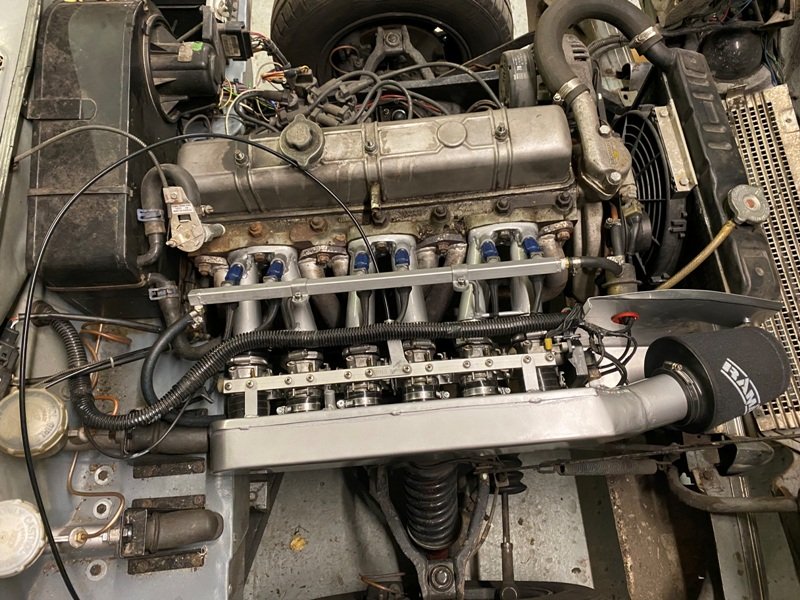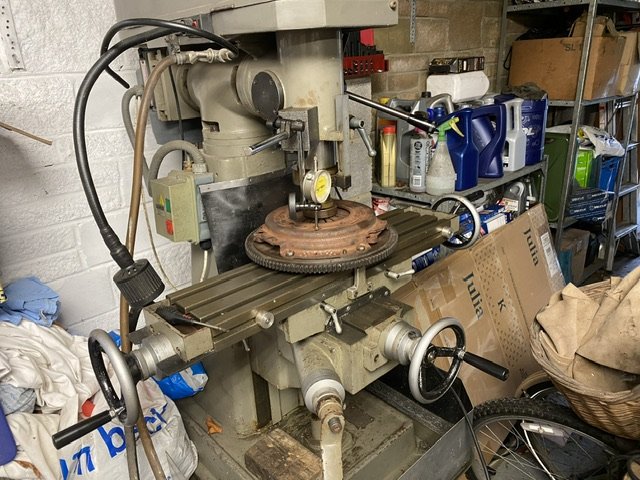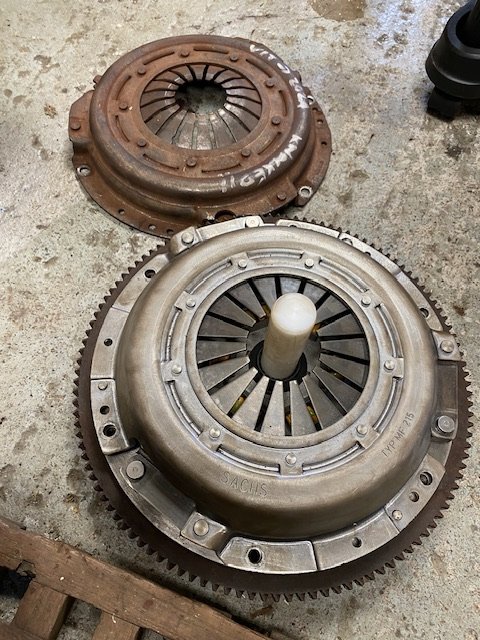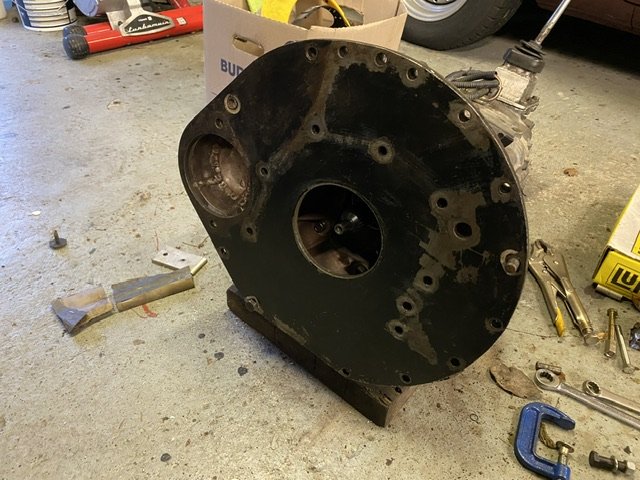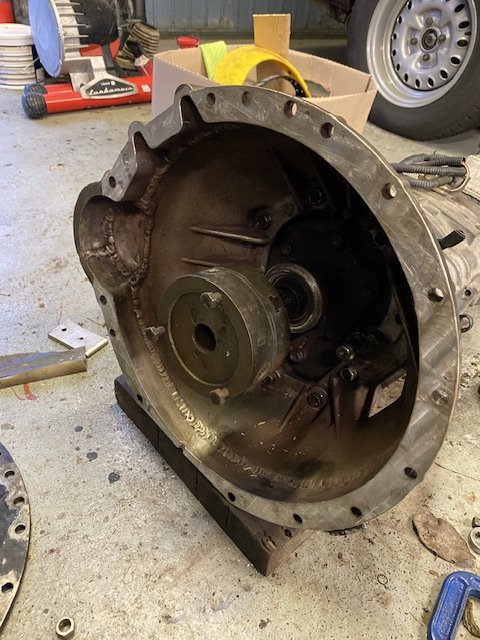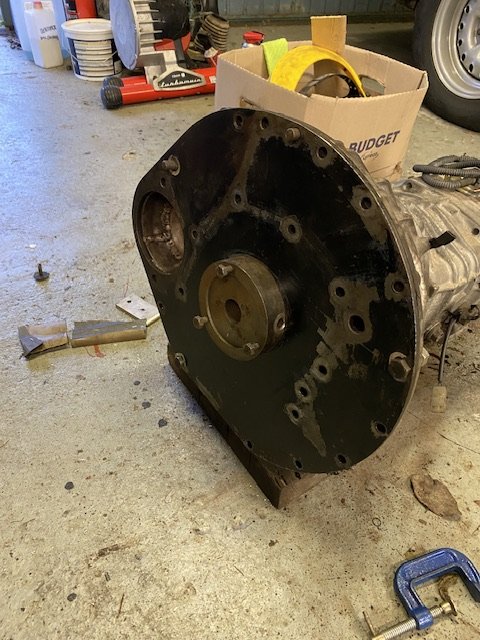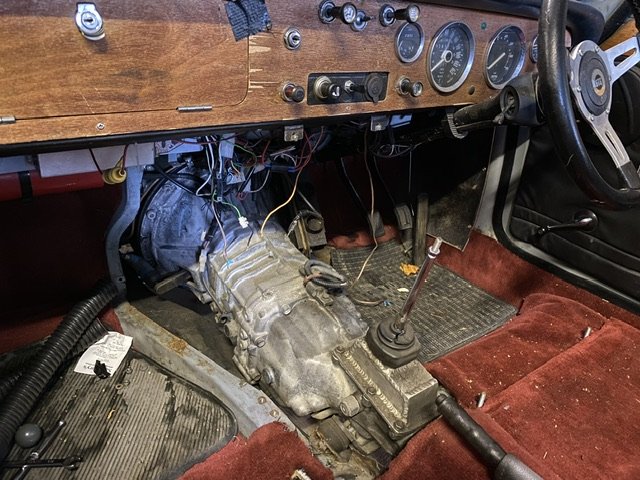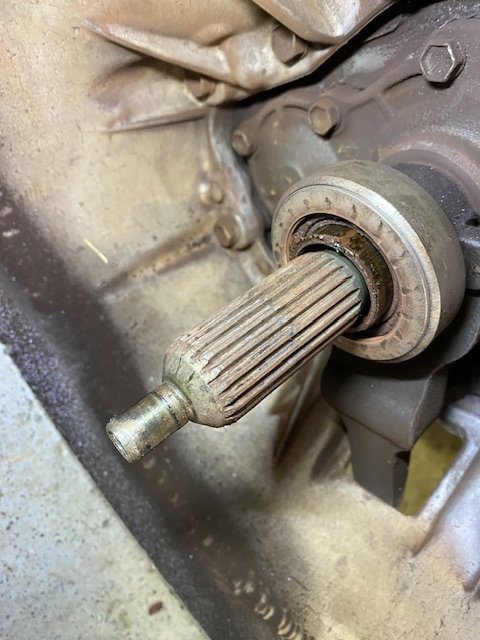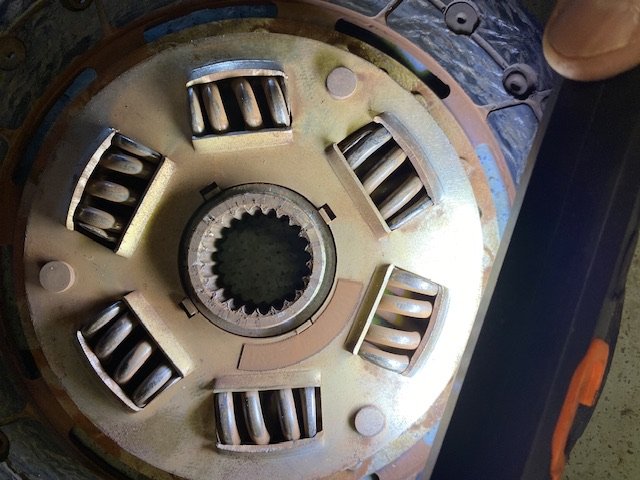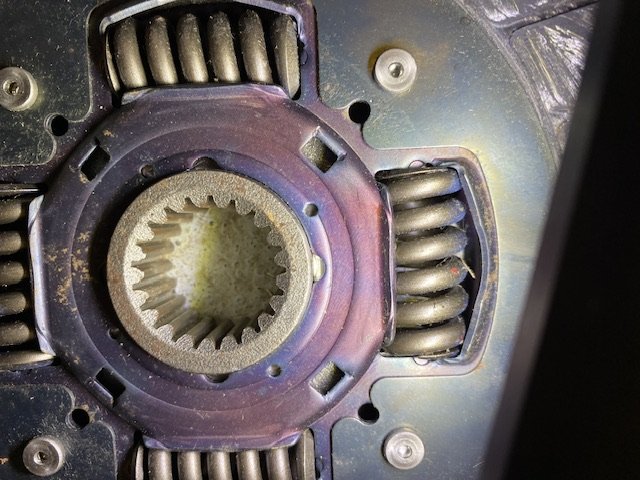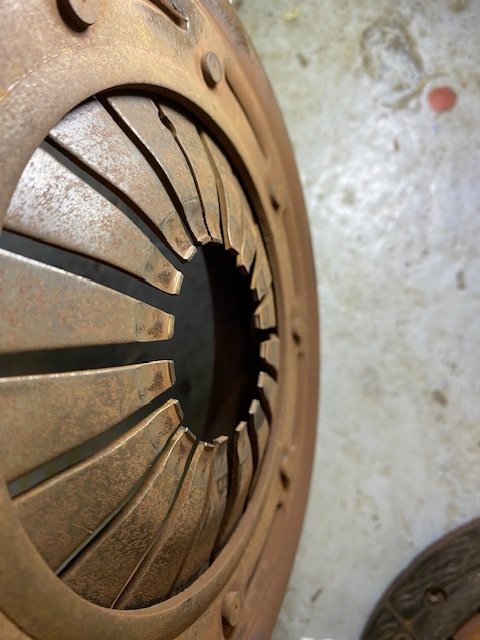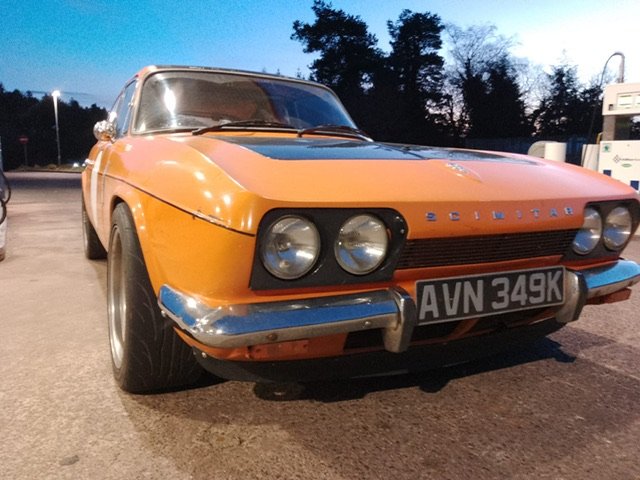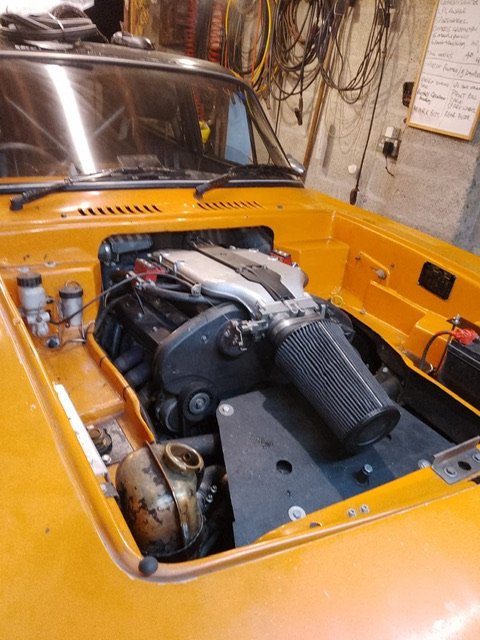-
Posts
1215 -
Joined
-
Last visited
-
Days Won
4
Everything posted by VitesseEFI
-

Runamuck's Datsun 620 discussion thread.
VitesseEFI replied to RUNAMUCK's topic in Project Discussion
My Dad had a new one of these as a “company” vehicle in 1979 in Swaziland. Bench seat and column change IIRC. It was an enormous improvement over the Marina van it replaced which, at the grand old age of 5, was already largely defeated by Africa. The 620 though was ridiculously easy to get stuck when unladen. On one memorable occasion, 11 year old me had to get out and push after he’d pulled half off the tarred road to avoid a lorry and the left hand wheel just spun uselessly on the gravel shoulder. A colleague borrowed it one day and hit a cow with it, dead centre. Colleague considerably messed up (wear your seat belt!), truck also considerably messed up. Cow allegedly fine. Dad back in the Marina van for 6 months while the 620 was “fixed”. It never was the same again though. Africa wins again. -
Ref the different floorpans….. IIRC the really early MK1s had a transverse exhaust box tucked into that space (some Dolomite variants did too). That arrangement was dropped quite early on for the more familiar crazy afterthought hodge-podge, but seems they never changed the floor pan pressing….
-
Yes, good point, Stag info should work.
-
Sorry, don’t know. Many/most LHD cars had it but RHD is pretty much an Oz / NZ only thing, I assume due to local regs. Never seen a dual circuit one in the UK, though they may exist. Bit of poking around my usual sources has draw a blank. What I do know is that you will struggle to bleed the clutch, just because it’s a Lockheed M/C. Devils work they are. I’d run that line below the reservoir if at all possible as I think there’s a risk it’ll unbleed itself like that.
-

Discuss here about Yoeddynz's little Imp project...
VitesseEFI replied to yoeddynz's topic in Project Discussion
Dunno about quakes. I do know that QC can be an issue. Previous company went through a fairly short phase of source CI pump casing parts from a Turkish foundry. Sizeable voids stuffed with car body filler and painted over don’t hold pressure very long! -

Discuss here about Yoeddynz's little Imp project...
VitesseEFI replied to yoeddynz's topic in Project Discussion
Quite a lot of modern Euro stuff has camshafts lobes that are either shrunk fit or have a hollow shaft hydro-formed under them. The lobes occasionally move - bad things happen. Destruction. General mayhem. Shrapnel…. -

Clutch problems, caused by modifications or bad parts?
VitesseEFI replied to VitesseEFI's topic in Tech Talk
He’s quite right obviously. I’m pretty confident that this aspect is good and the initial measurements I did tended to prove it. Will re-measure more accurately before refitting and may even plot a graph….. Other thing is that I have had it working beautifully in the past ….. Even this particular collection of scrap worked very nicely when first installed. I’m coming to the idea that this failure was mostly due to crap parts. -
Reckon this is heavily influenced by sensor positioning. Given that my original 4.2 has lasted well, l’m assuming my sensor positioning is good…… I’m a bit foxed by the Spartan website which seems to most of their models as NLA…. I’d probably put it in middle pipe section with the wire pointing to 1 o’clock, could swing it round pointing out of the pic if it helps packaging. In downpipe below blue cap probably fine too.
-

Clutch problems, caused by modifications or bad parts?
VitesseEFI replied to VitesseEFI's topic in Tech Talk
Update on this. Checked crank endfloat. 0.2mm. My build notes say it was 0.17mm when first assembled 28k miles ago. So that’s good. Did some testing using the mill That’s the combo that’s just come out. The friction plate is only about 1/2 worn at 7.35mm. It starts to release about 6.5mm but needs 8 to fully release as the spring has gone lopsided. That, with sticky splines will be the wide biting point I think. The same friction disc with my new Sachs cover starts to release at 3.5mm and is fully free at 4mm. I gathered up the wreckage and took it to my localish clutch shop. He was very polite, but I think he was telling me his competitors friction plate spline was made of cheese. No doubt on his thoughts on the QH cover…. Bin food (that was before I fitted it!). They made me a replacement friction plate in an hour…. And it was half the price of the last one. Top service! The new friction plate is 8mm thick and with the Sachs cover needs 5.5mm to start to release and is fully free by 6mm. Meanwhile, I put my hybrid bell housing on the mill. Engine side face was a little wobbly so I faced it. Took less than 1mm to clean. Fitted the backplate, flywheel and bell to my spare engine. Then posted the gear box in from behind. Spigot picks up in the pilot bearing first then the gearbox/bell dowels engage. Little bit of a wiggle and shove and on it pops. Alignment can’t be too bad. But to check another way…. pop the backplate on the bell and it’s very tempting to think that 4” (3.997” in fact) hole might be intended to be concentric….. but is it? Being both lazy and cheap I spent 10 minutes rummaging through my junk looking for a ready made tool…. Turns out I have this 3 jaw chuck which measures 3.993” and easy to nip onto the spigot. Pops right on, no wiggles needed. I think she’s good. Have also clocked the backplate on the mill. It’s a bit dished (0.5mm), but evenly so. Within 0.2mm. Better than my 2 spares…. Made an alignment tool Running out of excuses not to refit, except I tweaked my back a week ago and the refit is intensely physical…- 9 replies
-
- 10
-

-
As above. For my Vitesse with Megasquirt MS2. Permanent install. Would prefer with a display. Currently have an Innovate LC1 (Bosch 4.2 sensor) and some random 52mm display that have worked well for 15+ years, but now getting flakey. TIA Nick
-
Hello….. I resemble this remark (not just mathematically some would claim ) But even I can (mostly) follow Professor Dave’s tutorial
-

Clutch problems, caused by modifications or bad parts?
VitesseEFI replied to VitesseEFI's topic in Tech Talk
Thanks. Appreciate the input. Some of these I can answer, some I’m going to have to check. The spline was definitely lubed when assembled. Grease used was from a tube of special LUK spline grease that I’ve used on every clutch I’ve done in about the last 15 years. Seems to work elsewhere! There’s no trace of it now though. Misalignment. Yeah. I’d like to think not but…. What I can say is that when last assembled the engine was out of the car and it went together really nicely. Clack! Straight up to the engine, no pulling it up with the bolts. With the ball-race spigot bearing and the gearbox bearings still being decently tight, I just can’t see that happening without alignment being decent. I will revisit… Crank thrust I will check. It is a known weakness on these engines - though this one has PB thrust washers so I’ll be (very) disappointed if it’s this. Hydraulics I’m confident are good. All hard-piped (with a coil for flex) and there’s travel to spare in both directions. I’ve been measuring the release arm geometry and running it through a full stroke to characterise it. It’s running roughly in the middle of its range. Haven’t plotted the results yet but, quick and dirty, I measured the slave stroke before dismantling at 20mm and this seems to equate to about 9mm at the bearing. I measured a very similar clutch a couple of years back when designing the concentric setup on my GT6 and that needed 6mm for release, so pretty sure I have more than I should need. So “over-throw” yes, almost certainly. Various stacking heights still to check. Definitely no actual contact between the friction plate and the diaphragm, even with the over stroking. Release bearing profile is definitely open to question. More work needed here. -
About 20 years ago I got fed up with whining, grinding, leakingTriumph gearboxes and managed to shoehorn a Toyota W58 from a Supra into my Vitesse. I couldn’t get much sense out any of the companies offering conversions (whether in NZ, Oz or US), and anyway I’m cheap, so I made my own. Some detail on that here https://triumphowners.com/to-car/vitesse-mkiii-efi/ (Scroll down to special interest projects). One of the challenges was the clutch. What I ended up with was the original Triumph pressure plate squashing a friction plate listed for a 70s 1.6 Hiace. It was 200mm rather than 215mm and a bit thick, but it worked. Spigot bush was a modified oilite top-hat bush fitted to the flywheel (oe bush is in the crank but Toyota shaft too stumpy to reach). The release mech including bearing and slave cylinder were standard Toyota Supra. After about 10k miles it was becoming obvious that the clutch had problems. Odd noises when taking up and lots of shunt when trickling along in traffic accompanied by clanks and squeaks from the bell housing. Managed about another 5k and pulled it apart. Basically, the sprung centre was disintegrating and the springs utterly crushed. I put this down to the combination of the springs always being too light for the 2L torque and it being a rather crappy QH aftermarket plate. Managed to find a better quality one and slapped it back together. All good for about 10k miles (some of them very hard miles) before the noises started again. Engine was done too so everything came out for a refresh. Once again the sprung centre was collapsing with very crushed springs. This time I splashed out and bought a bespoke 215mm friction plate built for the application from Helix Motorsport. It was expensive - seemed well made. Also used a brand new cover plate, machined the flywheel to take the OE Supra ball-race spigot bearing and spent some time checking concentricity and made some minor changes to doweling. I also did some detailed measuring and determined that a 5/8” M/C should give the correct throw. I had been using 3/4”! Once back together it worked beautifully. Light action, biting point mid-stroke, plenty of bite. No more excessive shunt. Only concern, slight squawk from the bellhousing on initial pedal pressure. Anyhow, got some miles on the new much fiercer engine, mapped it. Went for a hoon around Europe. All good. Except….. after about 5k, the biting point was near the floor. Then on the floor…. Then under the floor. Could find nothing wrong externally, so I cheated and fitted a 0.7” M/C. Problem solved. Slightly heavier pedal but otherwise good. Apart from that squawk. Fast forward a few years and maybe 8k miles and preparing for another European mission, I have my wife drive the car as practice and she struggles because the biting point is once again on the floor. I cheat (again!) a stick a 3/4” M/C. Problem solved. It’s a bit heavy now though. So, in the last 4 to 5 years and 12k miles the biting point has continued to go down. Or rather, it’s been getting wider. That is, you have to crush the carpet to get it to clear, but it doesn’t fully bite up until right near the top, and how much bite comes in at what point in between seems variable. Yesterday I decided it was time to stopping ignoring it (apart from moaning about it) and investigate. Wrestling it out is a bit of a mission. Some of the bellhousing bolts are very inaccessible, it’s probably my fault (consequences of various mods) but the Audi design guys would probably give me 8/10. Two marks deducted for not using Torx/triple hex heads. This bit looks normal-ish. Bit grubby and the plate is very sticky on it ….. and there’s loads of backlash! Spline in my expensive Helix plate is completely borked. This is what it should look like (this is a 200mm Exedy plate) So, that’s part of the problem. The plate hanging on the splines would explain the variability and possibly some of the long travel. Also…. This looks distinctly unpromising. Especially since only about 28k miles in total. That’ll be the squawk then…. Friction surfaces all look fine. Plate is 1/3 worn at most. It’s never slipped. So what’s going on? - Misalignment is a possibility though I’m struggling to see clear signs. - It is possible (probable) that the release bearing profile is wrong. It’s the Toyota one for a 250mm clutch being used with a 215mm cover. The Triumph release bearing doesn’t fit the carrier (2mm smaller ID, very thin wall on the carrier) - It’s possible that the cover assembly is poor quality. Can’t remember where I got it.Its marked QY13039. More QH crap? -That spline though. What has done that? Never seen anything like it. I’ve still got the last plate I used and the spline on that is perfect. Expensive and crap? -Will do some more measuring today to check the release mech geometry but I don’t think it’s the problem. I have new Sachs cover intended for a Saab that usually works very well, but obviously the friction plate and release bearing need more thought.. Thanks for reading. Ideas welcome!
-

SEEN88's 2001 Renault Clio RS 172 - Frogsport
VitesseEFI replied to SEEN88's topic in Other Projects
Looks like an easy fix. Does de-registered mean it can never go back on the road, or just lots of red tape? -
That’s a helluva drive. But what a spot! Have you thought about buying a “double wide”, some pontoons and couple of big outboards and just sailing across?
-

Adoom's 1975 Reliant Scimitar. Discussion.
VitesseEFI replied to Adoom's topic in Project Discussion
Interesting. Thanks. Every day is a school day -

Adoom's 1975 Reliant Scimitar. Discussion.
VitesseEFI replied to Adoom's topic in Project Discussion
Are you saying Alfa used this bottom end as a base for their V6? -

Adoom's 1975 Reliant Scimitar. Discussion.
VitesseEFI replied to Adoom's topic in Project Discussion
It’s this one https://en.m.wikipedia.org/wiki/General_Motors_54°_V6_engine#3.2 I’m not sure how closely related to the 2.5 and 3.0 it is in terms of shared parts -

Adoom's 1975 Reliant Scimitar. Discussion.
VitesseEFI replied to Adoom's topic in Project Discussion
It’s out of one of the Vauxhall/Opel Omega family I believe. Most of them were auto I think. Possibly because GM don’t have a manual that will last the warranty period. I’ll see if I can get more detail. If he were to put it up for sale I might struggle to resist the temptation….. -

Adoom's 1975 Reliant Scimitar. Discussion.
VitesseEFI replied to Adoom's topic in Project Discussion
Mate of a local mate has this It has a “lightly tweaked” 3.2 GM V6 in it with R25-R28 box and is apparently a “bit of an animal”. Possibly the driver is also as he’s already killed two gearboxes… -
My experience, having run the same engine (6 cylinder Triumph) on single ITB with MAP as sole load sensing signal and then “upgraded” to ITBs is that both ignition and fuel maps were utterly different and it was not possible to use MAP as the sole load sensing signal as it wasn’t generating enough vacuum. (All 6 runners connected to a single sensor). I’m using “ITB mode” which is a blend of MAP and Alpha N (TPS) and seems to work ok.
-

Discuss here about Yoeddynz's little Imp project...
VitesseEFI replied to yoeddynz's topic in Project Discussion
Yeah, but you don’t find all the leaks…, because antifreeze makes leaks -

Discuss here about Yoeddynz's little Imp project...
VitesseEFI replied to yoeddynz's topic in Project Discussion
Plain water one is new to me. I have seen it written that some like to do the first start dry and run until just hot enough to melt the glue coating. Judging that makes me twitchy… Alternatively run plain water and cap off so the system can’t be pressurised? Certainly it is true that antifreeze is good at creeping through any gaps Hope it can be resolved without additional effort and expense! -
Liked for the car content, not your health problems…. Get well soon & don’t overdo it in the meantime!
-

Discuss here about Yoeddynz's little Imp project...
VitesseEFI replied to yoeddynz's topic in Project Discussion
That’s the “I have made fire” moment right there. Congratulations on the birth of your “monster” Bloody good work. Looks and sounds the business.

